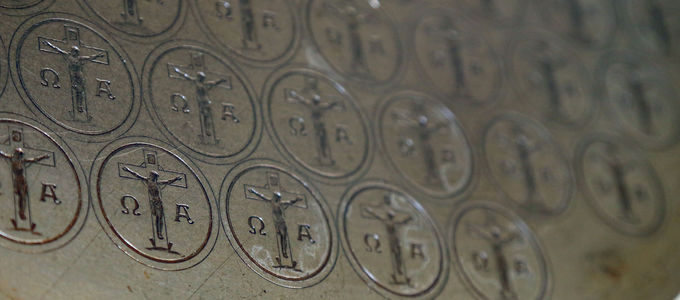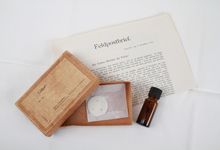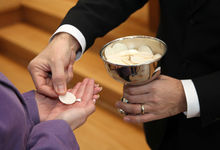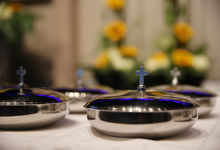100-year anniversary of the combo-wafer: given for all
Not everyone can be so carefree when they partake of Holy Communion: some of the ingredients in the wafers can be harmful for people with certain illnesses. But even here, Germany’s main wafer bakery can provide assistance.

What happened previously: hygiene and scarcity — as of 1917, the wine for Holy Communion was no longer offered in a chalice, but rather applied directly to the wafers in the form of little droplets. In the beginning years, this was a toilsome do-it-yourself process performed by hand, but today it is a streamlined production process that transpires in factories owned by the Church.
When flour makes you sick
Gluten is the name of the mixture that makes the dough into dough—and bonds the bread together at the most basic level. This applies to cereals such as wheat, spelt, rye, millet, and oats. But not everyone can process this elastic protein. Some people merely have allergic reactions to it, but others can become really sick from it.
Weight loss, depression, developmental problems—all of these can be symptoms of an illness known as celiac disease. This is a chronic infection of the small intestine, with which the body reacts to certain elements within gluten. Those who suffer from this illness must adhere to a strict diet. Even a little dose of flour can trigger serious reactions.
And it is with corresponding concern that many members would have to take the wafer at Holy Communion—if the wafer bakery in Bielefeld, Germany had not already made provisions long before: for more than fifteen years now, the New Apostolic Church has also offered wafers without gluten.
Special wafers made by hand
In addition to flour made from a special sticky rice from Thailand, the gluten-free wafers contain only water, and are otherwise free of binding agents. This was different in previous years when cornmeal was the basis of the gluten-free wafer and locust bean flour with calcium lactate was the binding agent.
The special wafers are baked by hand—using devices that were once standard in earlier decades: an oversized waffle iron and a handheld dabbing device. The fact that these wafers are produced by hand makes their production 30 times more expensive than the automatic process. But the total amount produced is rather small: only about 40,000 of the approximately 100 million wafers produced annually in Bielefeld are gluten-free.
The special wafers are distributed primarily throughout Germany, Austria, and Switzerland, but also to North America. For initial orders, affected members must ask their local rector to notify their District Church of the need.
How alcohol disappears…
People who suffer from alcoholism are not worried about the flour, but the wine. In order to avoid the risk of a relapse into abuse, doctors recommend strict abstinence. So what happens to the alcohol in the drops of wine on the wafers?
Even if it were pure wine, the amount of alcohol present would roughly correspond, at the absolute maximum, to the amount present in a tablespoon of tomato juice produced from the natural fermentation process. This is because the three drops contain a total of only 0.001 millilitres of wine of the Zweigelt variety, which itself originally contains 12.5 percent alcohol per volume.
And indeed, the alcohol evaporates during the production process: before being dabbed onto the wafers, the wine is simmered for around twelve hours in order to give the drops a strong colour. And a further portion evaporates later on during storage. “All in all, we believe we can justifiably assume that there is no remaining alcohol present in the wafer by the time the wafer is consumed,” says Michael Block, the director of the wafer bakery.
Without drops of wine if necessary
However: “In the case of those who suffer from alcoholism, another aspect which cannot be underestimated is the psychology of addiction. Even images, or the very idea, of an alcoholic beverage can trigger a desire,” says the District Evangelist. “For this reason, a high degree of personal responsibility is asked of an alcoholic, who must decide whether he or she will be able to tolerate the normal Holy Communion wafer. Should this decision have negative consequences, we can, in individual cases, offer wafers without wine, which people can dab with grape juice on their own, for example.”
At present, Michael Block is not aware of any case in which wine-free wafers are delivered for people suffering from alcoholism. Nevertheless, the wafer bakery does distribute exactly these kind of wafers in larger amounts from time to time—to other Christian denominations. “We help each other out when there is a shortage of supply,” relates the District Evangelist. These are then most often special wafers in the double sense: without drops of wine and without gluten.
Photo: Frank Schuldt
Article info
Author:
Date:
Keywords:
Andreas Rother
27.05.2017
Holy Communion,
Auxiliary institutions









